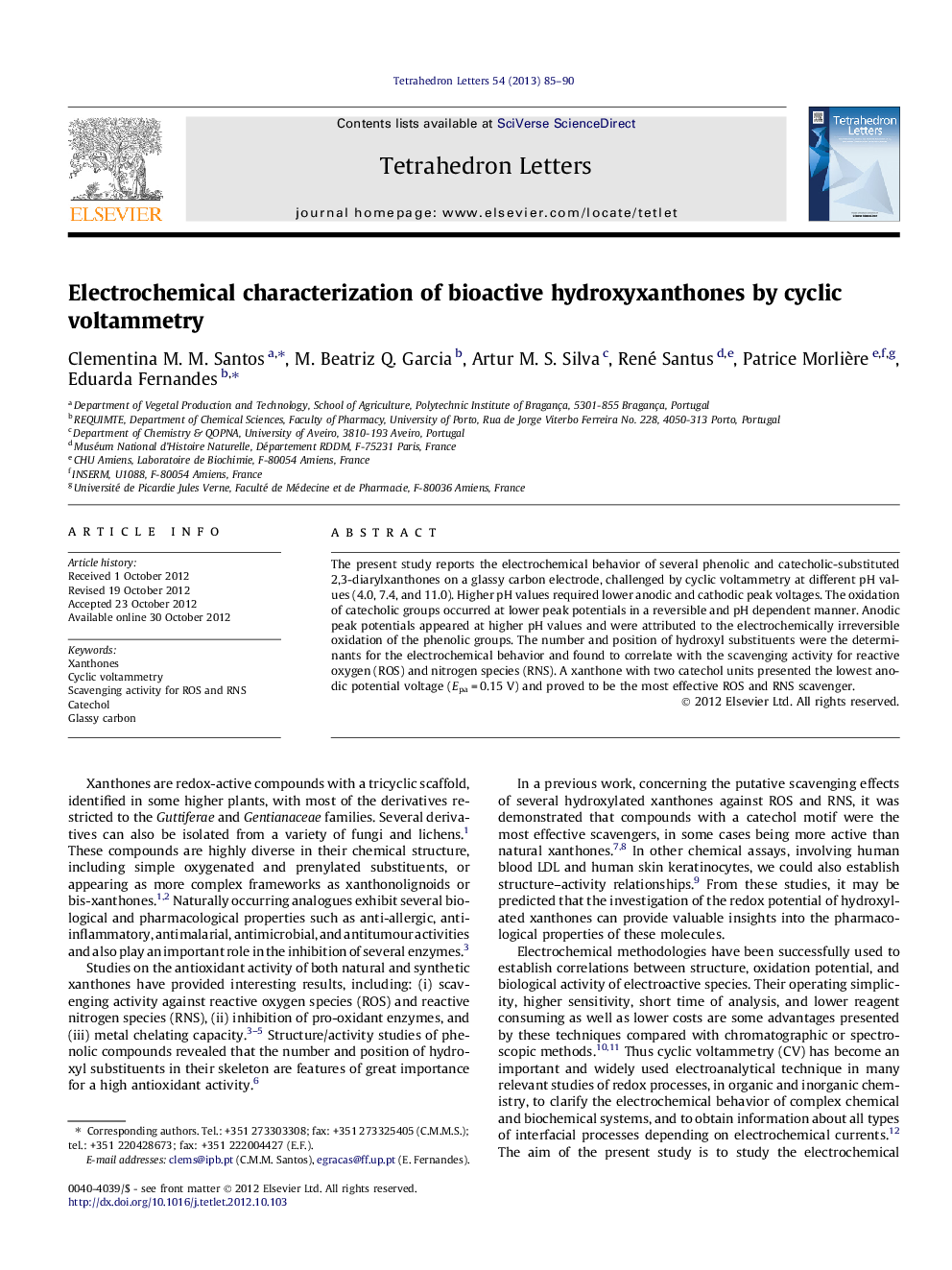| Article ID | Journal | Published Year | Pages | File Type |
|---|---|---|---|---|
| 5273994 | Tetrahedron Letters | 2013 | 6 Pages |
The present study reports the electrochemical behavior of several phenolic and catecholic-substituted 2,3-diarylxanthones on a glassy carbon electrode, challenged by cyclic voltammetry at different pH values (4.0, 7.4, and 11.0). Higher pH values required lower anodic and cathodic peak voltages. The oxidation of catecholic groups occurred at lower peak potentials in a reversible and pH dependent manner. Anodic peak potentials appeared at higher pH values and were attributed to the electrochemically irreversible oxidation of the phenolic groups. The number and position of hydroxyl substituents were the determinants for the electrochemical behavior and found to correlate with the scavenging activity for reactive oxygen (ROS) and nitrogen species (RNS). A xanthone with two catechol units presented the lowest anodic potential voltage (Epa = 0.15 V) and proved to be the most effective ROS and RNS scavenger.
Graphical abstractDownload full-size image
